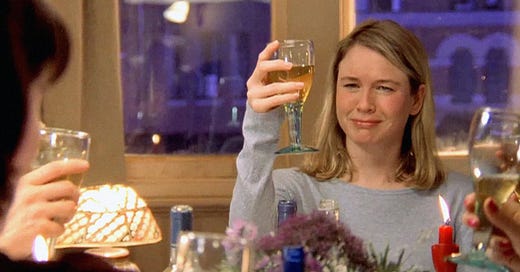“Whoever said orange is the new pink was seriously disturbed.” - Elle Woods
When I filed my essay on Tangled for my former A.V. Club column When Romance Met Comedy, my editor kindly pointed out that it read a little more like a general appreciation of the Disney flick than an exploration of its rom-com bonafides. I had to sheepishly email back to admit that, yeah, I kind of cared about the movie more as a movie than as a romance.
For as much as I loved writing WRMC every other week, there were also times when the premise of the column felt a bit limiting. My affection for romantic comedies never wavered, but there’s only so much you can dig into one genre for years on end before it starts to feel just a touch repetitive. And readers weren’t exactly wrong when they questioned whether films like Legally Blonde, Gentlemen Prefer Blondes, and Dirty Dancing really fit into the genre.
So when I found myself unexpectedly unemployed this year, I took some time to think about the larger ethos that links the pop culture I’m most passionate about. And that’s when I settled on the umbrella term “girl culture.”
What is girl culture?
As The Powerpuff Girls taught us, “girl culture” is sugar, spice, and everything nice plus that elusive dose of Chemical X. It’s Little Women and The Spice Girls and Sex and the City and Jane Austen and Nicki Minaj and YouTube beauty tutorials and the U.S. Women's National Soccer team and Wonder Woman and Harry Styles and any movie that’s ever been referred to as a “chick flick.”
It’s the corner of pop culture that’s unfairly undervalued because it’s primarily aimed at women. And it’s the corner of pop culture that can sometimes use its underdog status as a shield to protect itself from worthwhile criticism too.
Of course, girl culture isn’t exclusively enjoyed by girls; nor do all women and girls enjoy it. In fact, the very idea of “girl culture” perhaps sounds a little outdated in our increasingly, brilliantly non-binary world (“femme” is maybe a better catch-all for what I’m getting at). But I think there’s both a recognizability and a fluidity to the idea of “girl culture” that still makes it a valuable label from a pop culture standpoint.
Girl culture is all the obvious stuff like Barbies and rom-coms and the Disney princess canon, but it’s more than that too. Horror movies are girl culture. Shipping Kirk and Spock is girl culture. Aragorn opening the doors at Helm’s Deep is girl culture.
What is this Girl Culture?
Here at Girl Culture: The Substack, I want to explore all of those facets and more in essays that reflect on girl culture, past and present. It’s both a continuation of and an expansion on my work at When Romance Met Comedy, and I hope you’ll follow along as I shape my first self-published venture.
As of now, all the writing on Girl Culture will be free to everyone, although I’m turning on paid subscriptions for anyone who’d like to support my work financially as well. You can expect newsletters once or twice a month — or whenever the mood strikes me.
Click here to support Girl Culture’s free content for $5 a month or $50 a year





Really glad to have this place to read your take on this Girl culture, Caroline 😊